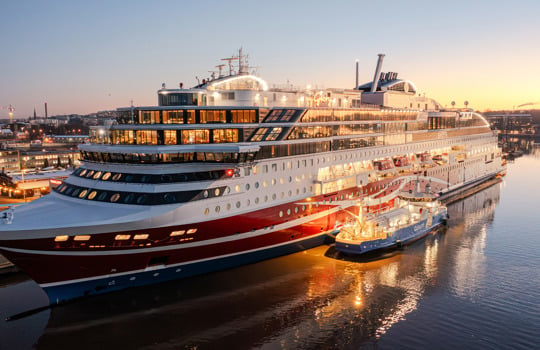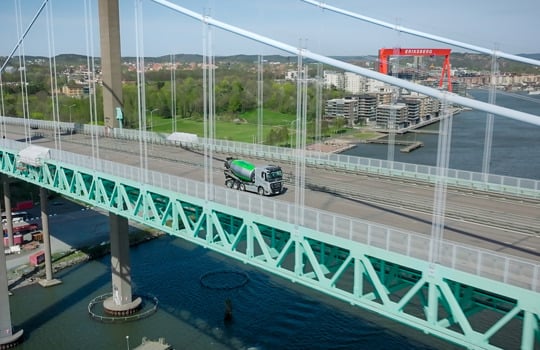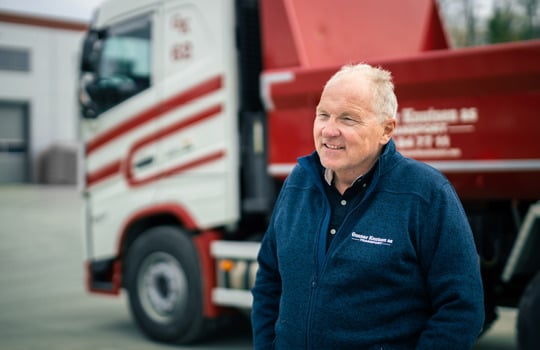SSAB put words into action: steel coils travel almost emission free from Finland to Sweden
SSAB’s transport emission reduction targets prompted the company to look for solutions to transport steel from Finland to Sweden with minimum carbon dioxide emissions. SSAB partnered with Ahola Transport and Viking Line, and now the steel coils travel from the Finnish city of Hämeenlinna to Swedish customers by biogas.
SSAB joined the climate initiative First Movers Coalition at the UN Climate Change Conference in Glasgow in 2021. Among other things, SSAB has committed to contract zero-emission medium- and heavy-duty trucking services by 2030 if available on the market.
“It was the trigger for us to start developing emission-free solutions,” says Heikki Hellsten, Head of Logistics at SSAB Europe.
The company began to find out whether their logistics partners were interested in and had possibilities to provide low-emission transport.
“We manufacture around 2.5 million tons of steel a year in Finland and each ton travels by truck at some stage. If you work it out, you need to transport 700,000-800,000 tons a year emission free. It’s a big job. No-one can arrange such transport in six months or even a year, we have to be ahead of the curve,” Hellsten says.
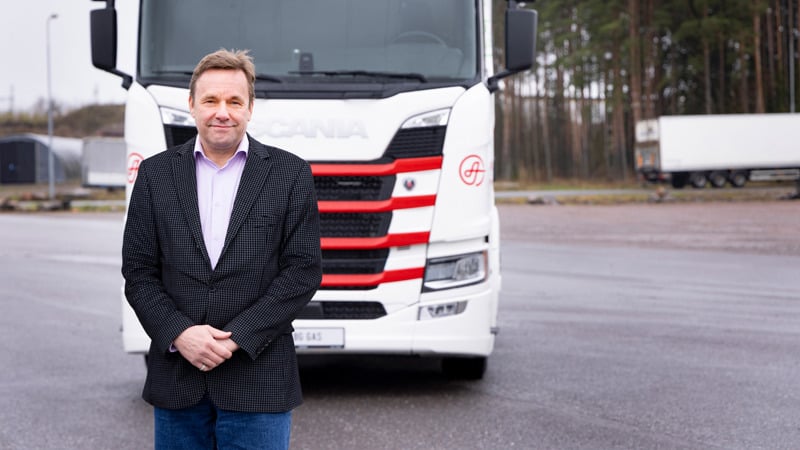
According to Heikki Hellsten, transport in the green freight corridor has gone smoothly. “Both trucks operate the route on a regular schedule. We’re really pleased.”
First green freight corridor implemented using biogas
SSAB’s plant in the Finnish city of Hämeenlinna makes steel products for the needs of the automotive industry and construction, among others. Heavy coils weighing 8–20 tons are transported to customers around the world – including Finland’s western neighbor.
Since fall 2024, steel has been transported from Finland to Sweden using biogas: first by truck from Hämeenlinna to the Port of Turku, then by ship from Turku to Stockholm and from there by truck to customers in Sweden. This is the so-called green freight corridor – which is the first to be powered by biogas from start to finish.
Ahola Transport operates two trucks on the route, one powered by biogas and the other is an e-truck. Both trucks transport two loads of steel, each weighing around 40 tons, to Sweden each week. This means that around 160 tons of steel are transported almost emission-free from Hämeenlinna to Sweden each week.
The sea crossing from Turku to Stockholm takes place on the Viking Grace and Viking Glory vessels, on which cargo customers can choose biogas as fuel.
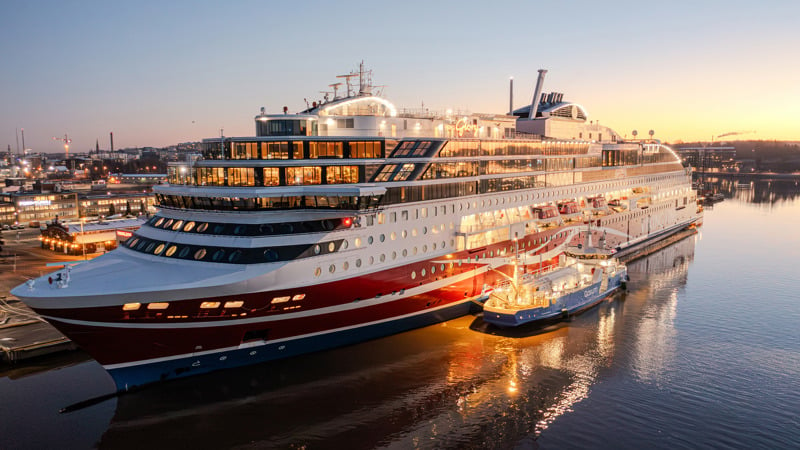
Viking Grace and Viking Glory are dual-fuel vessels capable of operating on both diesel and liquefied biogas or liquefied natural gas.
64 tons gross weight run on biogas
Ahola Transport has been SSAB's logistics partner for decades. Heikki Hellsten says that common ground was quickly found also in low-emission transport.
“As companies, we have a similar mindset and goals. We are both interested in new solutions and want to try new methods that make operations more efficient and reduce emissions.”
Fossil-free transports between Finland and Sweden began in September 2024. Ahola Transport’s Managing Director Åke Nyblom says that the company already had experience of gas-powered vehicles, but not with such heavy-duty loads. The gross weight of the combination is 64 tons both for the biogas truck and the e-truck.
According to Nyblom, the transport has gone without a hitch and there are biogas filling stations in suitable places.
“Although a gas-powered truck has the same range as a diesel-driven one, it’s slightly different with e-trucks, which have a range of around 300 kilometers.”

According to Åke Nyblom, in addition to the transport fleet, the transition to low- emissions also places demands on the control system. “When we report emissions, we need to know what has been refueled and when. It also requires a lot on the system side.”
Demand is higher than supply for low-emission transport
SSAB’s customers have welcomed the green freight corridor. According to Heikki Hellsten, there is greater interest in low-emission transport than is currently possible to satisfy.
“We have customers who definitely want this. Sometimes we have to say that there are not enough low-emission transports for everyone at the moment.”
Hellsten says that SSAB is still in an experimental phase, but the intention is to gradually expand the supply.
“Our future vision is for customers to be able to choose whether they want emission-free transport,” Hellsten says.
He believes that going forward more and more companies will require low-emission transport.
“Companies have to start reporting transport-related emissions, which means that they will also start to be reduced. This fact will not go away just by waiting it out.”
Low-emission and economical driving
Ahola Transport aims to halve the tank to wheel emissions, i.e. the greenhouse gas emissions generated by driving, from their 2015 level by 2030. In addition to low-emission propulsion, the company invests in energy-efficient and economical driving.
“We talk about overall environmental efficiency, and energy is part of that. The process must be efficient in all respects, and energy choices are made on top of this,” Åke Nyblom says.
This means that drivers are trained to drive economically, fleet acquisitions focus on the latest technology, and a driving management system ensures that vehicles operate with minimum empty runs.
Green transport chain requires working together
According to Heikki Hellsten at SSAB, the green freight corridor is a great example of how reducing emissions requires many actors to work together.
“It’s really awesome, that we are able to reduce emissions. No one can do this alone. In this case, it involves the transport company, the consignor, Gasum as the gas supplier, and Viking Line, which is responsible for the sea crossing.”
According to Hellsten, good relationships and trust are the keys to effective cooperation.
“It requires an atmosphere where everyone genuinely wants to do this. Here we have found it. Everyone has a sincere will, and the end result is great.”

